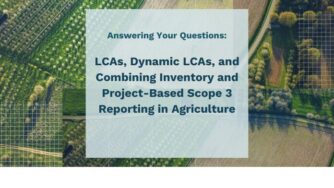For organizations to reduce their impact on the environment, they need a holistic approach to reducing total carbon emissions. If their product includes an agricultural component, an understanding of their sourcing supply shed is vital. With a full understanding of the carbon impact of a supply shed, corporations can annually track the changes in their land-based emissions and removals. By knowing their current baseline and modeling the impact of regenerative practices, enterprises can achieve their emission reduction targets and have confidence in their mitigation strategies.
CIBO’s Supply Shed Analysis allows companies to analyze a state, county, watershed or user-defined geographic area to determine its carbon footprint, carbon intensity, and the rate of adoption of practices including cash crop, cover crop, and tillage. CIBO Supply Shed also enables enterprises to perform what-if analysis on the impact of new practice adoption. After incentive programs are implemented, companies can quantify their progress towards carbon reduction and regenerative adoption targets.

Using these metrics from CIBO Impact, enterprises can:
- Understand Emission at the Supply Shed Level: Quantify emissions factors within various geographic boundaries, like, states, watersheds, counties and draw distances, to create supply-shed level metrics.
- Monitor On-the-Ground Activities: Quantify and verify management practices influencing emissions at the field level and aggregate across entire supply sheds.
- Provide Efficient Scope 3 Reporting: Leverage precise annual emissions factors and practice adoption rates to ensure accurate reporting and recognition of emissions, reductions and removals.
- Gain High-Value Insights on Sustainable Supply: Identify regions of high potential for emissions reductions/removal and source from verifiably low-carbon supply sheds.
Learn more and request a demo today.



